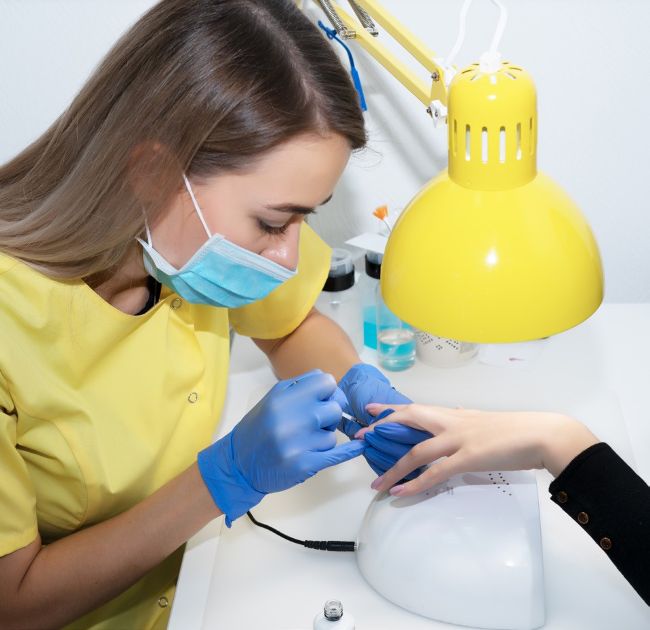ASK THE Experts
Our experts answer questions around all aspects of the industry

Image from Shutterstock
How do I treat contact allergies when they occur?
Firstly, if a contact allergy occurs, remove the product as soon as possible, but only if the client doesn’t have any open wounds or blisters that are weeping. Allergic reactions can continue as long as the product is still on the client, so you’ve got to make sure that it is possible for you to pop their fingers in a nail wrap with soak-off solution.
Next, advise your client to see their GP as soon as possible because nail techs aren’t experts in the medical industry. It’s also important to note that when the client returns to your salon (once the reaction has healed), you can’t put her back on that same system.
When you are changing them to a different system, test if the new one is OK for the client first by putting the product on one finger before doing a full set.
However, if it is you – the nail tech – who has had the allergic reaction, the only choice you have is to use an alternative nail system in salon, as constant perseverance with the product you’ve become overexposed to will eventually lead to you becoming sensitive to even more chemicals.
I would advise booking an appointment with your doctor for skin testing as well because they will use various different chemicals to pinpoint exactly what it is you’re allergic to. For example, both gel-polish and liquid and powder have acrylates in them, so if it is an acrylate you are allergic to, then you’re not going to be able to use either of those systems.
What ingredients do I need to be aware of?
Most of the ingredients mentioned below are listed in many nail products and are quite acceptable as long as they are being used safely. But, read up on these chemicals regularly because it is usually noted on the online science pages each year which are the known allergens. Also, find out who makes the product because you need to know what’s in it and where it’s made. This information should be readily available.
Liquid and powder
Methy methacrylate (MMA) – this is banned in the EU Ethyl methacrylate - (EMA) Isobutyl methacrylate Tetrahydrofurfuryl methacrylate (THFMA) Benzoyl Peroxide
UV/LED builder, sculpture gel and gel-polishes
2-hydroxyethy methacrylate (2-HEMA) Di-HEMA Trimethylhexyl Dicarbamate (Di-HEMA) Isobornyl acrylate (IBA) 2-hydroxypropyl methaccrylate (2-HPMA) Ethylene glycol dimethacrylate (EGDMA) Urethane acrylates
Dipping resins, silk and fibreglass resins, and nail glues
Ethyl-2-Cyanoacrylate (Source: Professional Beauty UK)

Georgie Smedley is MD of the Georgie Smedley Group.